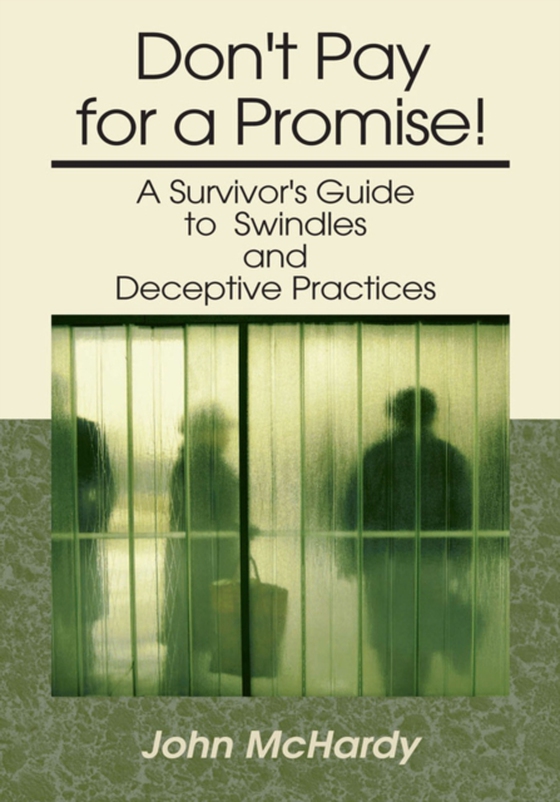
Don't Pay for a Promise! e-bog
84,99 DKK
(inkl. moms 106,24 DKK)
Growing out of a project to help the author deal with his own credulity, "e;Dont Pay for a Promise"e; is a treasure house of information distilled from hundreds of Government publications. These publications are constantly being revised and updated and the reader should consult them regularly for the latest facts. However, because each publication must stand on its own, there is a "...
E-bog
84,99 DKK
Forlag
Xlibris US
Udgivet
1 november 2000
Længde
276 sider
Genrer
Consumer advice
Sprog
English
Format
epub
Beskyttelse
LCP
ISBN
9781462818006
Growing out of a project to help the author deal with his own credulity, "e;Dont Pay for a Promise"e; is a treasure house of information distilled from hundreds of Government publications. These publications are constantly being revised and updated and the reader should consult them regularly for the latest facts. However, because each publication must stand on its own, there is a "e;patchwork"e; character to the material and finding answers for a particular situation can take time. By capturing the essence of these publications, John McHardy has created a powerful resource for anyone who has ever agonized over an offer that seems too good to be true. In 14 compact chapters, the book deals systematically with the diverse types and guises of consumer fraud, offering concrete advice on how to recognize and respond to each of them. The first chapter provides information common to all types of fraud and serves as a foundation for the rest of the book. The next eleven chapters then cover individual aspects of the subject. For example, Chapter 2 "e;Identity Theft"e; examines topics that range from simple theft to the less obvious hazards of automatic debit and electronic banking. A typical chapter begins with an outline of pertinent laws and regulations and continues with one or more sections on particular issues. For example, Chapter 3, arranges the broad subject of "e;Contests"e; into three separate sections. Within each section, the material is organized under a consistent set of paragraph headings. These include the "e;promise"e; (the scam or deceptive practice), warning signs that may distinguish it from a legitimate offer, and ways that consumers can protect themselves or at least minimize their losses. The book concludes with two chapters of reference material, Chapter 13 detailing the many organizations that can offer help in the fight against fraud and Chapter 14 containing the full text of FTC Telemarketing Sales Rule.
 Dansk
Dansk

